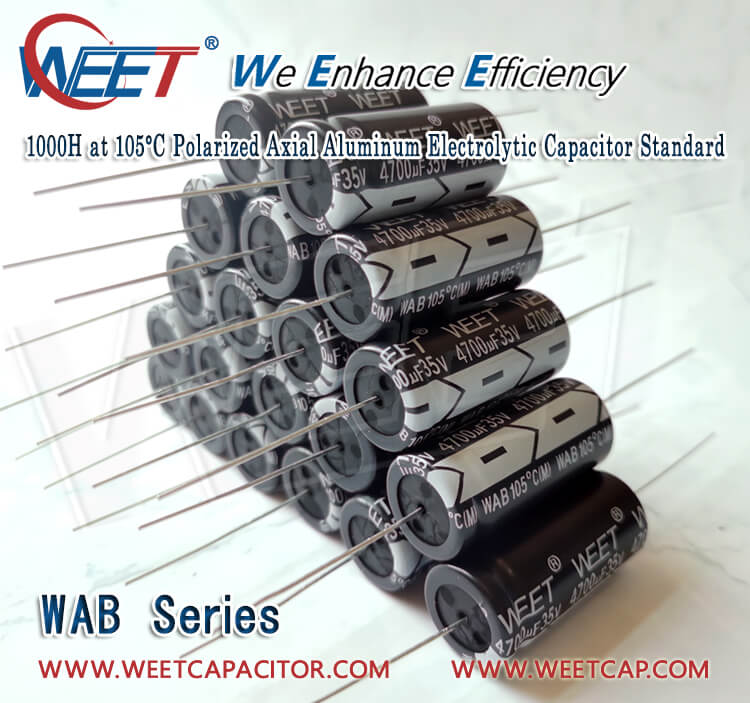WEET Shares Failure Mode and Cause Analysis about Aluminum Electrolytic Capacitors Part I
WEE Technology Company Limited - WEE are Capacitors Specialist
WEET is famous in producing all kinds of aluminum electrolytic capacitors. Today we would like to share 6 failure modes and cause analysis about aluminum electrolytic capacitor. All the information is collected by WEET engineers and for knowledge reference only. If you have other opinions, welcome to email us and discuss with WEET engineers.
1、 Concept of aluminum electrolytic capacitor
Aluminum electrolytic capacitor is made of aluminum cylinder as negative electrode, which is filled with liquid electrolyte and inserted into a bent aluminum strip as positive electrode. It also needs DC voltage treatment to form an oxide film on the positive plate. It is characterized by large capacity, but large leakage, poor stability, positive and negative polarity, suitable for power filter or low-frequency circuit.
2、 Common failure modes of aluminum electrolytic capacitors
When the capacitor fails, the material, structure, manufacturing process, performance and service environment of all kinds of capacitors are different, and the failure mechanism is also different. Today, easy capacity network will reveal common failure modes of aluminum electrolytic capacitors: leakage, explosion, open circuit, breakdown, deterioration of electrical parameters, etc.
3、 Failure mode and cause analysis
A. Leakage
Leakage is one of the causes of capacitor failure, and aluminum electrolytic capacitor is no exception. The working electrolyte of aluminum electrolytic capacitor is acidic. If it overflows, it will seriously pollute and corrode other components and printed circuit board around the capacitor. At the same time, the electrolyte in the electrolytic capacitor dries up gradually due to leakage, which leads to the failure of capacitor due to breakdown or deterioration of electrical parameters. There are many causes of leakage, such as:
① The sealing of aluminum electrolytic capacitor is poor;
② If the aluminum electrolytic capacitor is sealed with rubber plug, the rubber may be aged and cracked due to its long service life;
③ There are some problems in mechanical seal technology;
④ Generally, the manufacturer will consider the problem of liquid leakage. They will specify in the enterprise standard that vertical installation is required, while some enterprises adopt horizontal installation.
B. Explosion
When the working voltage of aluminum electrolytic capacitor is too large, or there are many defects in the oxide film medium, or there are harmful anions such as chlorine radical and sulfate radical, so that when the leakage current is large, the rate of gas generated by electrolysis is faster. The longer the working time is, the greater the leakage current, the more gas in the shell and the higher the temperature. The pressure difference inside and outside the metal shell of capacitor will increase with the increase of working voltage and working time. If the sealing is good and there is no explosion-proof measures, the capacitor will explode when the air pressure increases to a certain extent.

